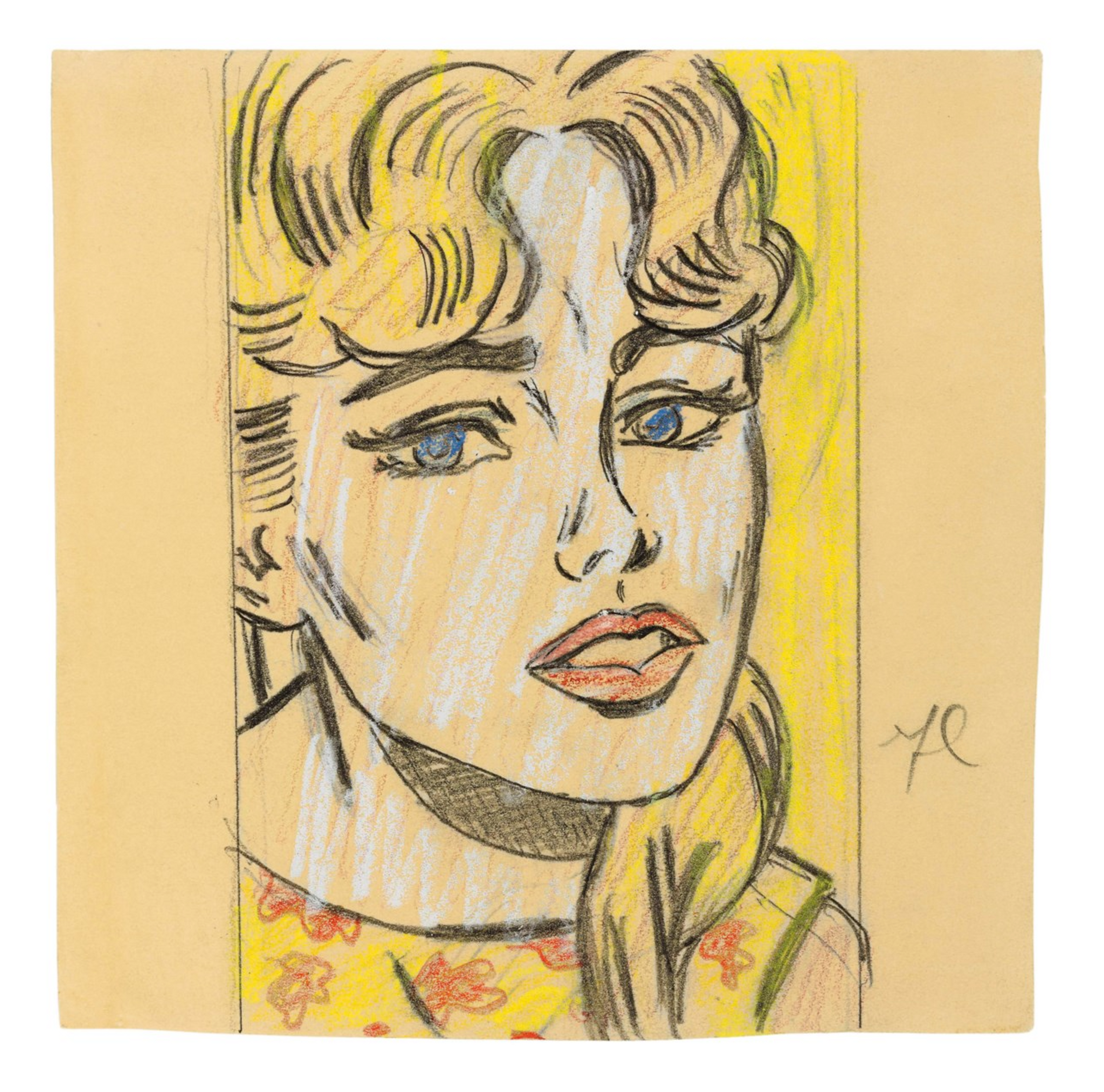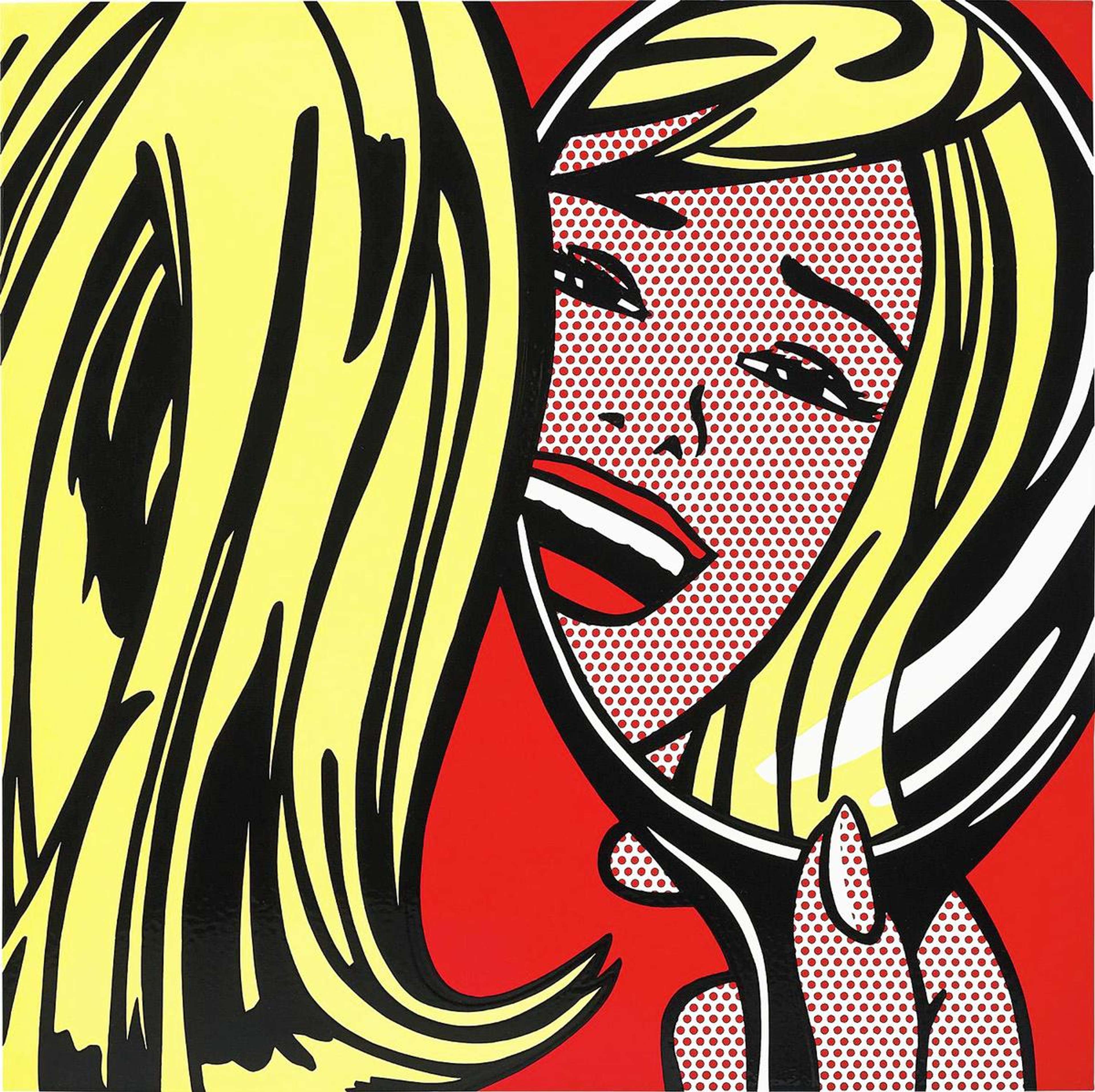Roy Lichtenstein's Ladies

 Nurse © Roy Lichtenstein 1964
Nurse © Roy Lichtenstein 1964
Interested in buying or selling
Roy Lichtenstein?

Roy Lichtenstein
290 works
Comic book aficionado Roy Lichtenstein (1923-1997) brought into the realm of ‘high art’ reworkings of popular graphic magazines throughout his career. One of his most repeated and iconic motifs was that of the comic book damsel in distress.
Roy Lichtenstein’s drowning, crying and anxious ‘girls’ were depicted as idealised blonde bombshells that spoke to contemporary beauty standards and parodied her social expectations. By singling out the troubled woman in a comic strip, Lichtenstein immortalised her pain and poked fun at the modern image of the ‘perfect’ woman who was naïve and completely at the mercy of her emotions.
Drowning Girl (1963)
Roy Lichtenstein’s Drowning Girl is a reworking of Run for Love! from DC Comic's Secret Hearts series. From the original comic cover, Lichtenstein modified the speech bubble; simplifying it to “I don’t care! I’d rather sink than call Brad for help!” By representing a small cross section of the cover, Lichtenstein draws sole focus to the weeping woman engulfed by waves. The block cobalt blue of her hair mimics the swirling water about her, and her pale tears fall down her face into the ocean of her misery. Like many of his representations of women from comic books, the title signifies her to be a ‘girl’ — not a woman — and therefore speaks to the fragility of women in love and their willingness to die for it.
Crying Girl (1963)
Lichtenstein’s Crying Girl print is another zoomed-in portrait of a woman from the romantic Secret Hearts comic series. Here, Lichtenstein’s reworked comic girl appears less sorrowful in her heartache. Rather, with her raised black eyebrows and wide white eyes, she seems purely fearful of love.
In the original lithograph, Lichtenstein captioned the work “To Letty with Love”, dedicating the Crying Girl to his fellow artist and girlfriend Letty Eisenhauer. In an interview, Eisenhauer said that Lichtenstein “wanted to make girls cry”, and did so by using the comic book woman as a foil for his own relationship troubles. In this somewhat autobiographical print, Lichtenstein reveals the fickle nature of a love which is addictive but ultimately destructive. The Crying Girl is inevitably miserable, despite being portrayed as the archetype of perfect femininity in 1960s America.
 Image © Christies / Anxious Girl (study) © Roy Lichtenstein 1964
Image © Christies / Anxious Girl (study) © Roy Lichtenstein 1964Anxious Girl (1964)
In his preliminary drawing for Anxious Girl, Lichtenstein reveals not only his process from drawing to print, but also the psychological power of his work to reveal emotion through simplified lines and mark-making. The overwhelming use of yellow in the drawing for her blonde hair, her dress and the background lead the eye to her mournful blue eyes.
Through this drawing stage we are offered a glimpse into Lichtenstein’s own emotive response to the original comics. His swift and jagged application of white pencil to signal the girl’s skin colour highlights the ravaging effects of heartbreak. In the painted final product, these white pencil marks are replaced with Lichtenstein’s signature red dots, diminishing some of the despairing sentiments in his drawing. Once again however, Lichtenstein depicts the woman as completely powerless in the face of love, despite appearing as the paragon of femininity under the male gaze.
Domesticated Women
Throughout the 1960s Lichtenstein was also fascinated by contemporary advertisements aimed at women. Marketing to women a range of domestic items that would make housekeeping an easier ordeal, these adverts often pictured idealised cartoon women who found great enjoyment in their servitude to home and family. Women With Dish Rag brings together illustrations of adverts for dishwashers, cleaning tools and home decorating.
As Lichtenstein proves, all of these adverts featured a homogenous image of femininity that was domestic and effortlessly beautiful while she carried out her chores. In Woman With Dish Rag, the lemon yellow of the dish cloth is married to her wedding band, suggesting the inevitable tie between wifehood and housekeeping. By transforming this advertised woman into a work of Pop, Lichtenstein proved how prevalent this image of the submissive, flawless and relentlessly happy woman was in 1960s American culture.
 Woman With Flowered Hat © Roy Lichtenstein 1963
Woman With Flowered Hat © Roy Lichtenstein 1963Woman With Flowered Hat (1963)
Even in his appropriations of famous works of art, Lichtenstein toyed with the ideal of the woman as muse in ‘high art’. His Woman With Flowered Hat is a satirical Pop reimagining of Picasso’s 1941 Dora Maar au Chat, and was created in the same year as his Crying Girl and Drowning Girl.
In this parody of Picasso’s portrait of his then-lover and muse, Dora Maar, Lichtenstein subverts the underestimation of Maar as mere muse to this modern ‘master’. Maar, working with the Surrealist circle in the 1930s, was a successful artist in her own right, despite continuously being portrayed as a damsel in distress by her male counterparts. Given Lichtenstein’s own preoccupation with the troubled woman, it is no surprise that Picasso’s fetishisation of Maar as a self-serving source of inspiration would intrigue him. Lichtenstein’s crass re-representation of Maar’s portrait in his characteristic block colouring is unsettling for viewers, as it further reduces Maar to a series of geometric shapes and fashions her into one of his blonde comic book heroines. Not only is Lichtenstein providing a shrewd critique of what we deem ‘high art’, but he also assaults the use of art to perpetuate contemporary image of beauty. With his blonde Pop Dora Maar, Lichtenstein updates the ‘masterpiece’ for the modern eye and beauty standard.
Roy Lichtenstein’s ladies are a testament to the clichéd, fantasy ideal of women in 1960s America. Even though his are reduced to simple graphic lines and red dots, the women Lichtenstein portrayed were part of the contemporary imagination as the ideal archetype of femininity. Though this image might have been appealing to Lichtenstein himself, his comic book heroines prove the power of mass-circulated media to establish a beauty standard which is unattainable and shaped purely by the male gaze.
Browse our Roy Lichtenstein prints for sale or get a valuation here.








